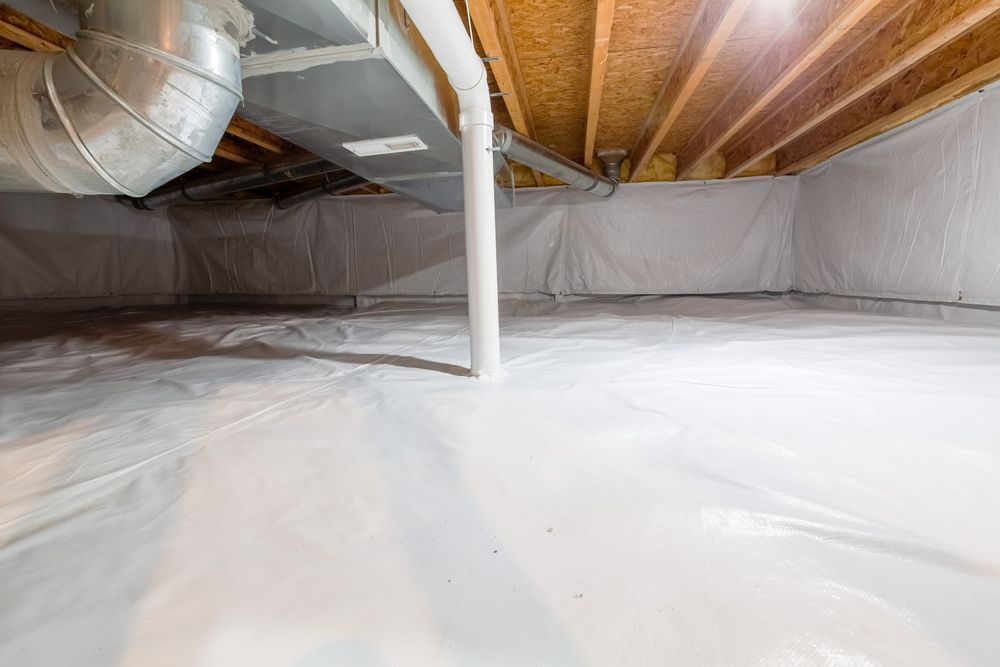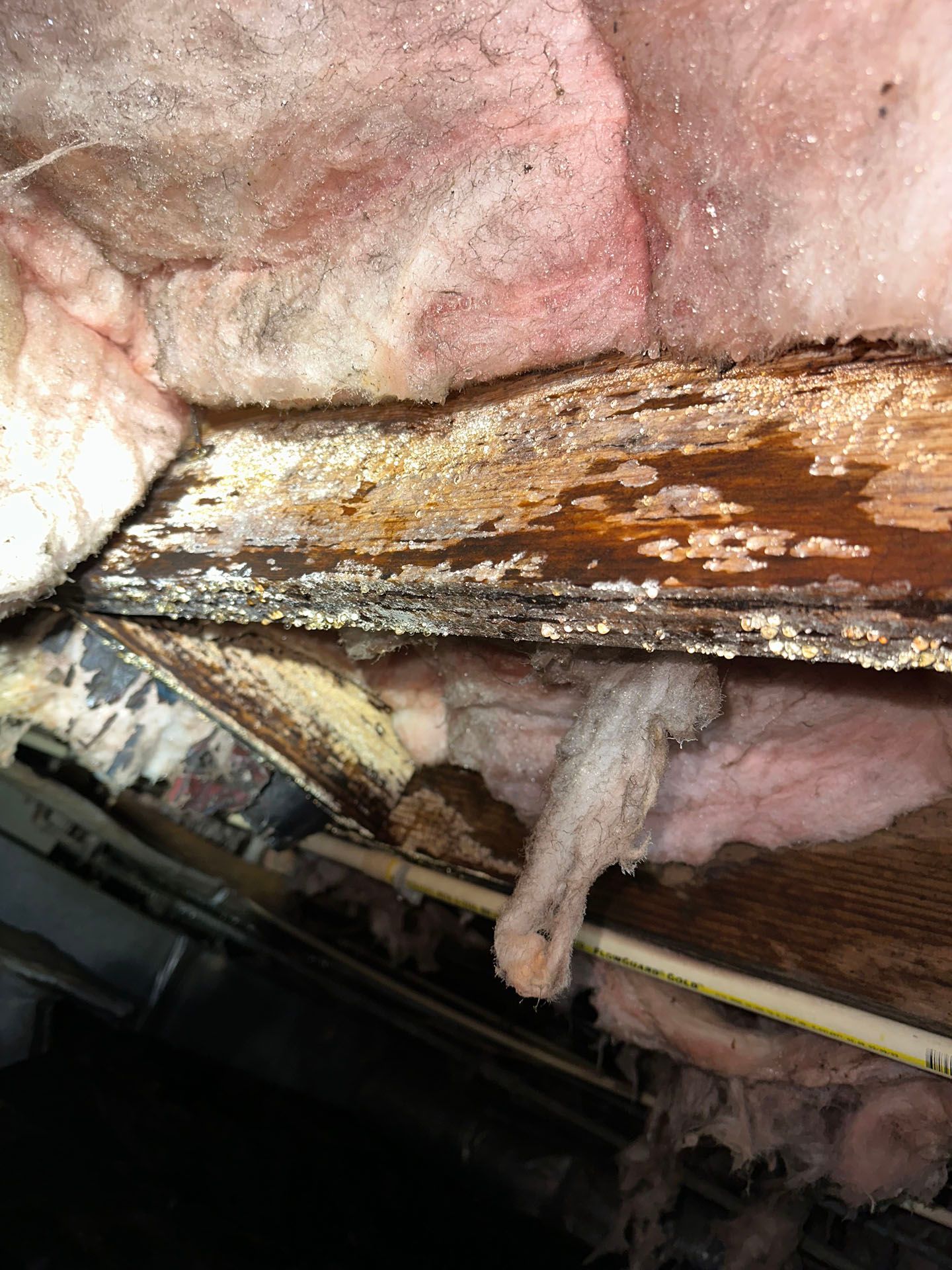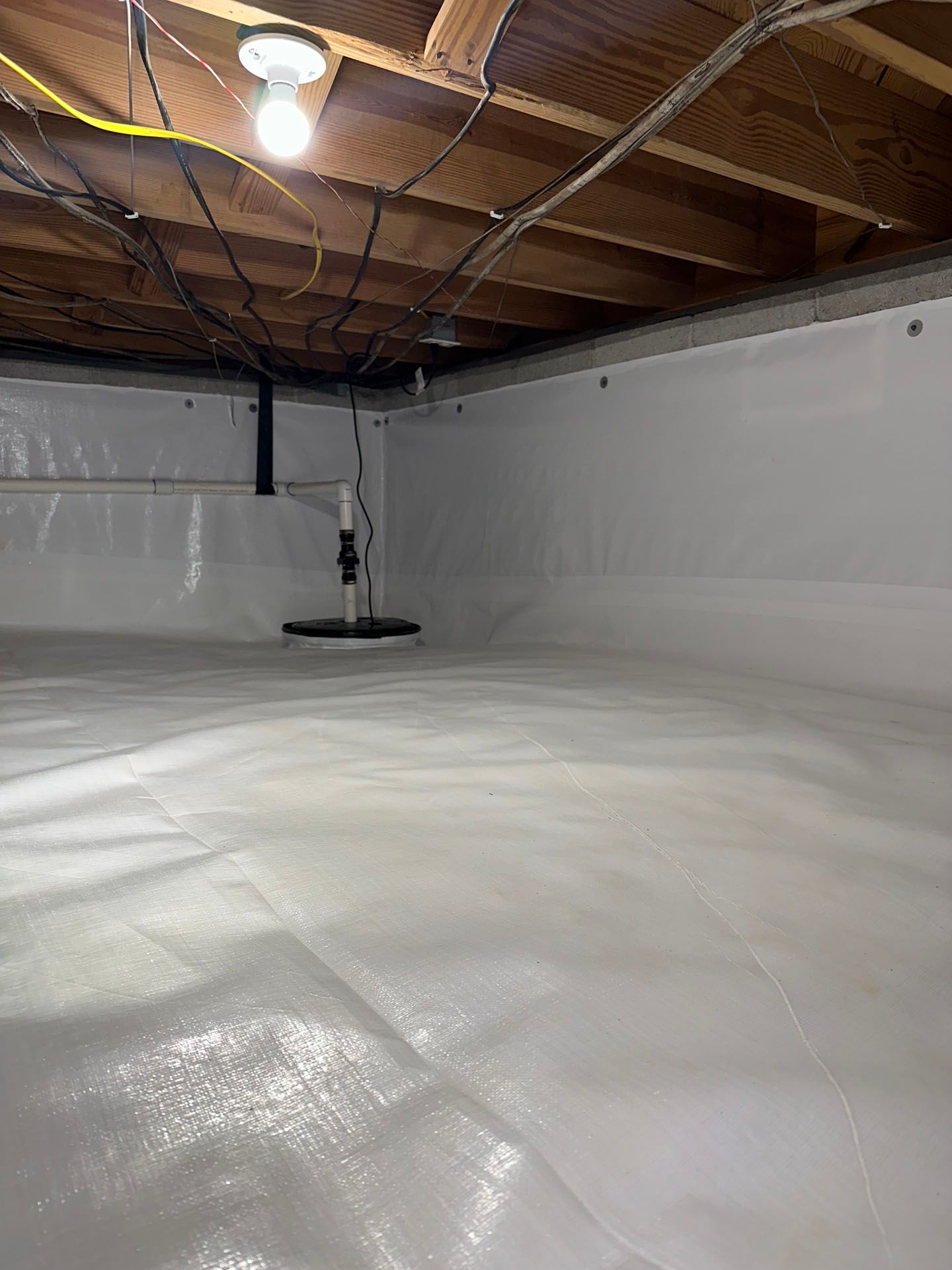Huntsville, Alabama

Claim Your FREE Crawl Space Inspection Today!
Sawyer Williams: 256-727-4422
Schedule Your Free estimate!
No-Obligation, Free Inspections
No-Obligation Free Estimates
We Warranty All of Our Work
100% Satisfaction Guaranteed
Do you detect a musty odor or spongy wood in your basement or crawl space?
Wood rot is a major problem that can lead to expensive repairs and possibly put your home's structural integrity at risk, so it's important to look out for this symptom.
Crawl space wood rot can be disastrous, but this guide will teach you how to spot the warning signs, take preventative measures, and fix the problem once it arises, so that you can safeguard your home and your sanity.
Introduction to Crawl Space Wood Rot
The crawl space under your house may not get much attention, but it actually plays an important part in the safety and longevity of your home. Wood rot, a form of deterioration caused by dampness and fungi, is a common problem in crawl spaces.
Crawl places are notorious for wood rot because of the humidity and lack of ventilation. Wood rot can happen everywhere in a house. Wood rot may rapidly spread, inflicting severe damage to your home's structural parts and providing the ideal breeding habitat for pests, if not treated.
In this manual, we'll examine the causes of and solutions to wood rot in crawl spaces. Also, we'll tell you how to spot wood rot and what to do if you find it in your house. Protect your home's safety and resale value by studying wood rot and applying preventative and corrective measures.
Causes of Crawl Space Wood Rot
The combination of water and fungi is what ultimately leads to wood rot. Wood rots quickly after being exposed to water. This can eventually cause rot, which in turn renders the wood brittle and more prone to collapse.
Wood rot is a common problem in basements and crawlspaces because of:
Plumbing or pipe leaks
High levels of humidity Poor drainage or grading near the foundation
insufficient air circulation
Intense precipitation leading to flooding or water damage
Crawl space wood rot can be avoided if these problems are fixed and ventilation is improved. Crawl area maintenance may include repairing water seepage, enhancing drainage, installing a dehumidifier, or enhancing ventilation. Preventing wood rot can be aided by lowering humidity levels.
Signs of Crawl Space Wood Rot
Hidden behind walls or under floors, wood rot can be difficult to spot in its early stages. If you suspect wood rot in your crawl area, though, keep an eye out for these telltale signs:
A musty or moldy odor: Wood rot is typically accompanied by a characteristic odor, sometimes strong enough to be detected even if the rot itself is not.
Pressing on the wood in your crawl space and finding it soft or spongy could be an indication of wood rot.
Discoloration, cracks, and pits in the wood, as well as crumbling or flaking, are all telltale indicators of wood rot.
In the event that the wood in your crawl space is rotting, it may not be able to hold the weight of your home, which could result in flooring that sag or feel bouncy.
Seek professional inspection if you suspect wood rot in your crawl space. Rapid spread of wood rot emphasizes the importance of early detection and repair.
Prevention of Crawl Space Wood Rot
Preventing wood rot from ever occurring is the optimal strategy for dealing with it. Some preventative measures against crawl space wood rot are as follows.
Avoid wood rot by keeping the crawl area dry, which is one of the most important things you can do. Repairing leaks and plumbing problems, installing a dehumidifier, and ensuring appropriate drainage around the foundation are all viable options.
Crawl area wood rot can be avoided with proper ventilation, which will also assist reduce humidity levels.
Use wood that won't rot; some trees just don't decay the way others do. Crawl area wood rot can be avoided by using rot-resistant wood.
Maintain a tidy crawl space: Cleaning out the crawl space of organic debris like leaves and twigs helps reduce the likelihood of wood rot by removing potential water and pest harborage sources.
The structural integrity of your home will be protected from wood rot if you follow these precautions.
Repair of Crawl Space Wood Rot
Wood rot in a crawl area requires immediate attention to prevent further destruction of the structure. To fix wood rot in your crawl area, do as follows:
The first step in fixing wood rot is to remove all the rotten wood from the structure. Framing, flooring, and other structural elements may need to be cut away in some places.
After removing the damaged wood, it is essential to dry the area completely. A dehumidifier and fans can help eliminate moisture and slow the spread of mold.
Before repairing the wood rot, it is necessary to fix the underlying conditions that are causing it. It may entail addressing issues with the crawl space's plumbing, drainage, or ventilation.
After the affected area has dried and any underlying problems have been fixed, the damaged wood can be replaced. To assist stop future rot, use rot-resistant wood or treat the new wood with a rot-resistant lacquer.
Keep an eye on things: After the wood rot has been fixed, regular inspections of the crawl space are necessary to make sure the problem doesn't return. Maintenance may include looking for leaks, examining wood for rot, and ensuring adequate ventilation and humidity levels.
If you follow this guide, you'll be able to fix the wood rot in your crawl area and keep your house safe.
Cost of Repairing Crawl Space Wood Rot
Wood rot in your crawl space can be expensive to fix, depending on how bad it is and what needs to be done to fix it. Wood rot repairs can be quite inexpensive (a few hundred dollars) or extremely expensive (a few thousand dollars), depending on the size and scope of the affected area.
The price tag on fixing wood rot in a crawl space may be affected by things like:
The cost of the repair job may increase or decrease depending on the type of wood that needs to be replaced.
How bad the wood rot is will determine how much it will cost to fix.
Crawl area wood rot repairs may be more expensive than those in other parts of the house because of the space's limited accessibility.
Wood rot repair costs may rise if they must also pay to address the underlying issue, such as a plumbing leak, that is causing it.
Before beginning any wood rot repair work, it is necessary to receive an estimate from a specialist. You'll be able to plan ahead for the repair cost with this more accurate estimate in mind.
Health Risks of Crawl Space Wood Rot
Wood rot can be dangerous to your health in addition to the property it destroys. Spores produced by wood-rotting fungi can be breathed and cause a variety of health concerns.
Pests like termites and carpenter ants may find a welcoming home in a home that has experienced wood rot, further weakening the building's structural integrity and posing health hazards to the residents.
It is critical to take care of wood rot as soon as possible to save your health and the stability of your home.
The rotten wood must be removed, the area must be dried up, and any underlying problems must be addressed. Taking precautions will lessen exposure to health concerns and prevent future property damage.
Crawl Space Wood Rot and Home Insurance
You might be wondering if your house insurance policy can help pay to replace the rotten wood in your crawl space. Wood rot caused by a covered occurrence, such as a plumbing leak or wind damage, is typically covered by homeowner's insurance. But since policies differ, it's best to talk to your insurer about what's included.
Depending on the circumstances, insurance may not pay to fix wood rot if it was caused by improper upkeep or lack of attention. An insurance company might not pay to fix rotten wood in a subterranean area if you neglected its upkeep.
Preventing wood rot and other problems can be achieved through routine home maintenance, which should include the crawl space. Doing so can help you save money on repairs and make sure your home is covered by your insurance policy if they are unavoidable.
Types of Crawl Space Wood Rot
In a crawl space, wood rot can take several forms, each with its own unique traits and causes. Here are some of the most typical forms of wood decay:
Wood that has been affected by brown rot has become dry and crumbly. The cellulose in the wood is degraded by a fungus, causing the wood to turn a brown or reddish brown tint.
White rot is a form of wood rot characterized by the development of soft, sponge-like wood. The lignin in the wood is degraded by a fungus, causing the wood to appear white or pale.
Wood that has been affected by soft rot will be mushy and discolored. To put it simply, it's a fungus eating away at the cellulose and lignin in the wood, making it weak and brittle.
To dry out and crumble, that's dry rot, a form of wood rot. A fungus responsible for this problem grows rapidly in dry environments and can cause widespread damage to wood very quickly.
There are many different types of wood rot, but fixing the problem as soon as possible is crucial for minimizing the amount of damage.
Professional Services for Crawl Space Wood Rot
It is recommended that you have a professional to inspect your crawl space for wood rot and then come up with a plan to fix it. A trained specialist will be able to assess how bad the wood rot is and come up with a complete plan to fix it.
If you need wood rot repair in your crawl space, hire a business that has experience with such projects. Check for a documented estimate and warranty, and don't forget to get client references.
In most cases, a professional will take the following approaches when fixing wood rot in a crawl space:
The first step in fixing wood rot is to determine how bad the damage is. The crawl space will be inspected by an expert who will look for decay and other problems that may be causing it.
Based on the findings of the inspection, the expert will design a plan outlining the procedures to be taken to repair the wood rot. The affected wood may have to be removed, the area dried out, and then new, rot-proof wood installed.
Replace rotten wood once the restoration plan has been finalized. Framing, flooring, and other structural elements may need to be removed and replaced with new, rot-resistant wood.
Professionals will keep an eye on the crawl space after fixing the wood rot to make sure it doesn't come back. Maintenance may include looking for leaks, examining wood for rot, and ensuring adequate ventilation and humidity levels.
If you have wood rot in your crawl space, it's best to get a professional to fix it so it doesn't come back.
Frequently Asked Quetions
-
How can I keep the crawl space flooring from rotting?
Drooping flooring can be identified by a number of symptoms, such as the floor itself sagging or dipping, the floor being uneven or bouncy, walls or doors not closing properly, water damage or stains on ceilings, and gaps appearing between floorboards. If any of these symptoms sound familiar, it's time to call in the pros for an evaluation and repair plan.
-
How can I tell if the wood in my crawl space has rotted?
A musty or moldy odor, soft or spongy wood, apparent symptoms of decay, and drooping or bouncy floors are all telltale signs that you may have wood rot in your crawl space.
-
If sagging floors aren't addressed, what risks are there?
There are a number of reasons why you should not ignore sinking flooring. In the worst-case scenario, it can compromise the stability of your home's framework, rendering it unsafe for human habitation. It can also make you more vulnerable to injury and lead to property loss. In addition to making it harder to sell or insure, ignoring the issue can lower the value of your house.
-
What should I do to fix the rotting wood in my crawl space?
Resolving wood rot in a crawl space requires eradicating the affected wood, drying the area, fixing the source of the moisture, replacing the wood with rot-resistant materials, and keeping an eye on things to make sure the problem doesn't return.
-
Does my homeowner's policy provide coverage for wood rot in my crawl space?
Wood rot in a crawl area caused by something like a plumbing leak or wind damage is typically covered by homeowner's insurance. But since policies differ, it's best to talk to your insurer about what's included.

Written by Sawyer Williams
Precision Crawlspace & Renovations
Sawyer has specialized in crawl space and foundation repairs for over six years. As the founder of Precision Crawlspace and Renovations, he is one of Huntsville's top experts in crawlspace moisture control. He has prior experience installing these systems, which has prepared him to solve complex problems related to crawl space encapsulation, mold remediation, and waterproofing.
Recent Blog Posts
Huntsville's Crawl Space News



What are you waiting for?
We Solve Crawl Space Issues!
Get reliable crawl space repair services at an affordable price, provided with the high level of service you deserve.
Call Us Today at: 256-727-4422
All Rights Reserved | Precision Crawlspace & Renovations

